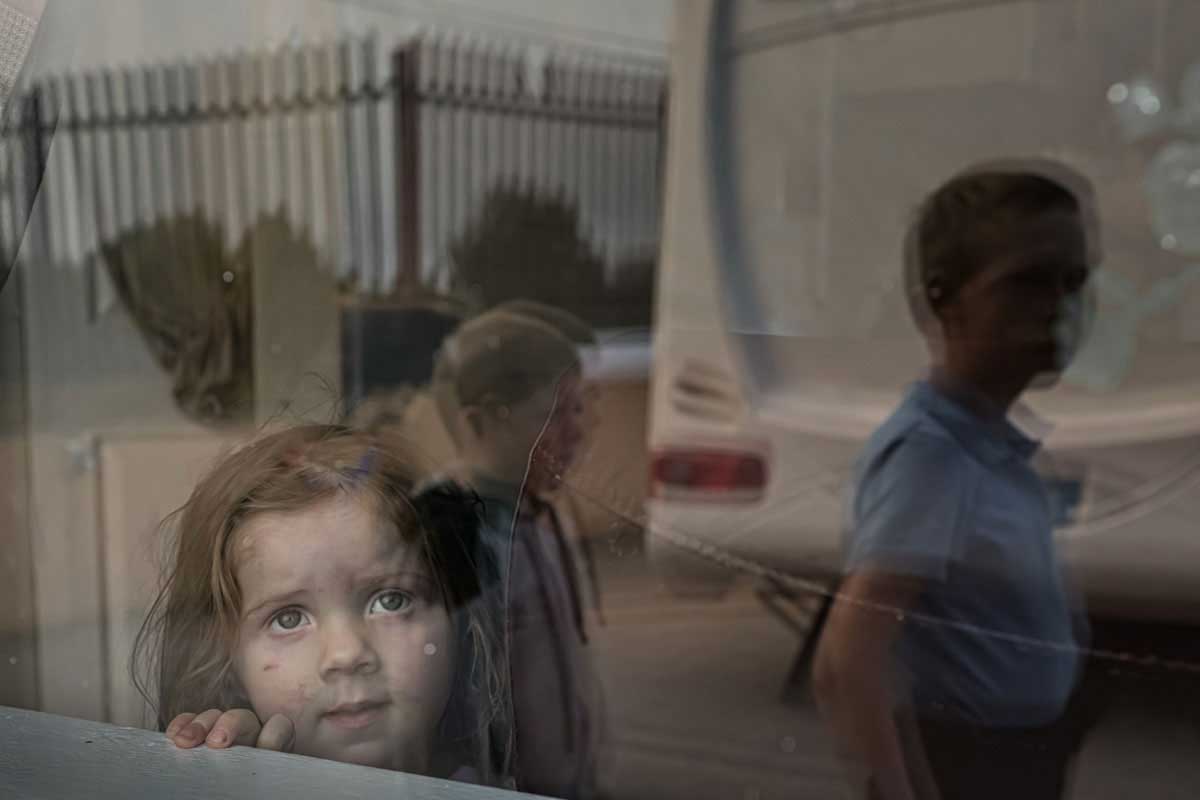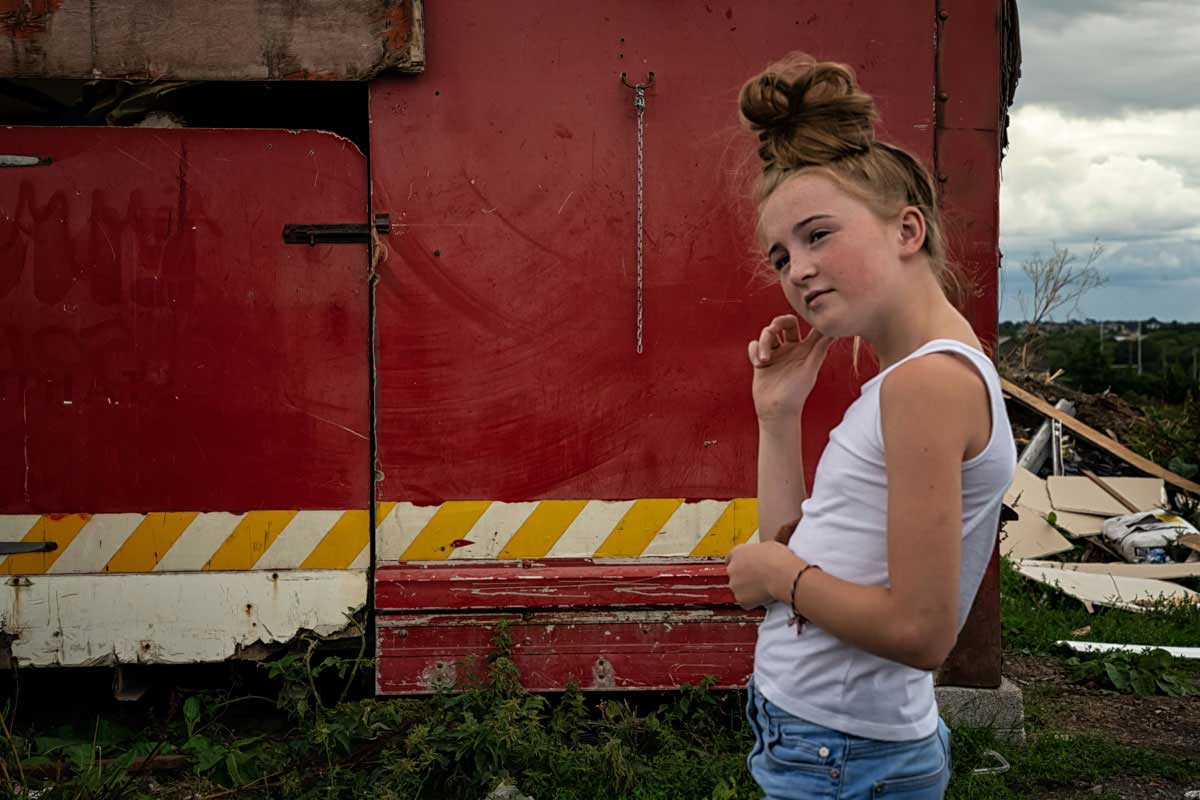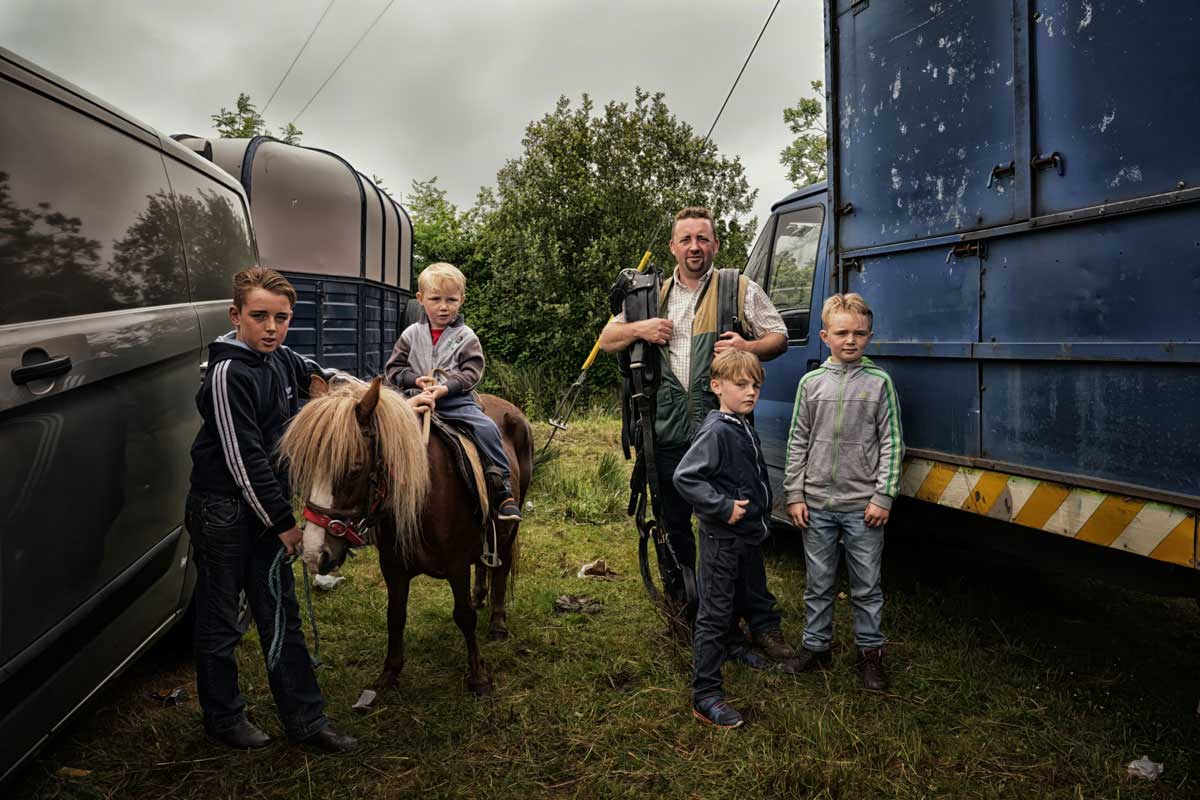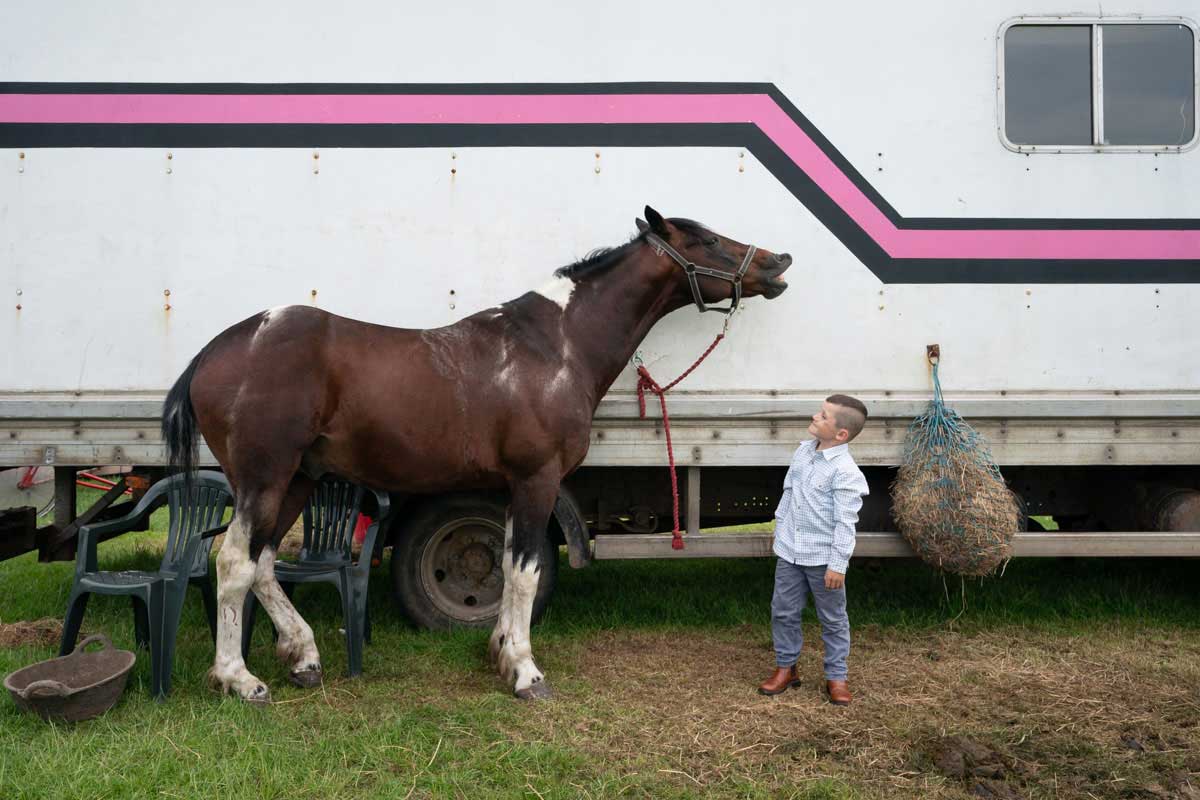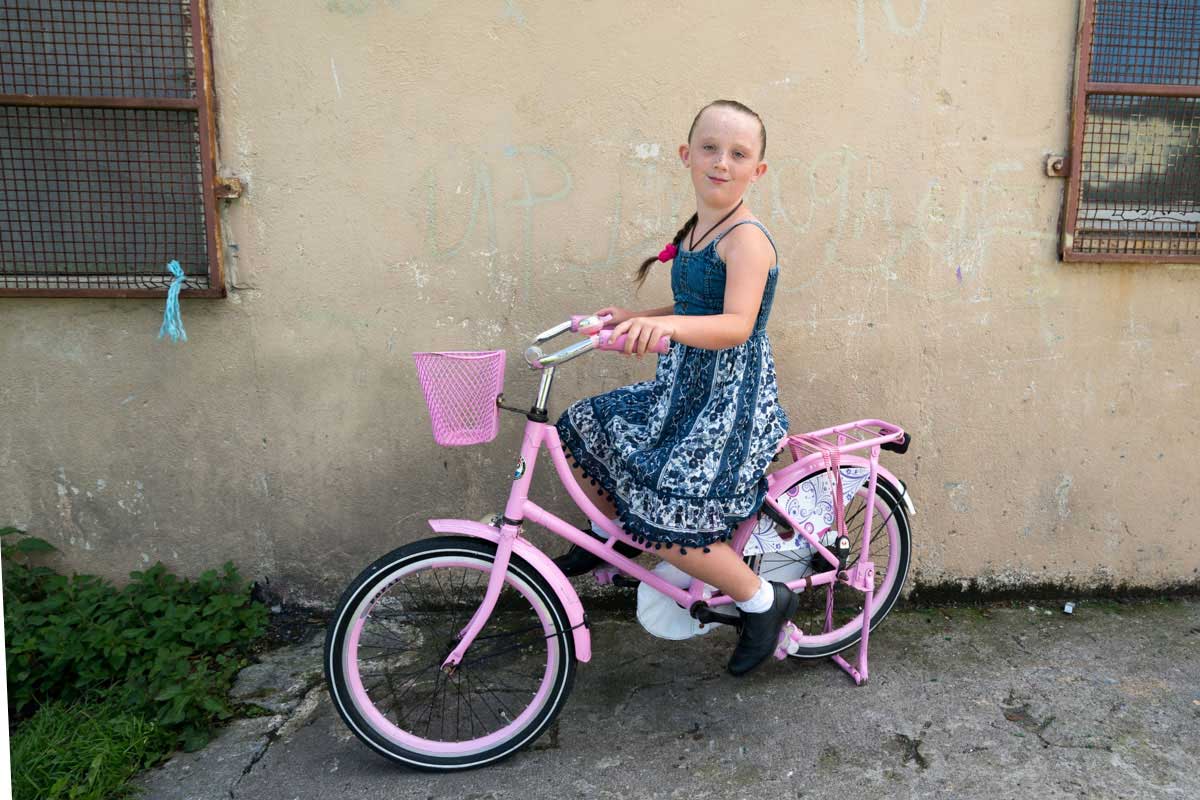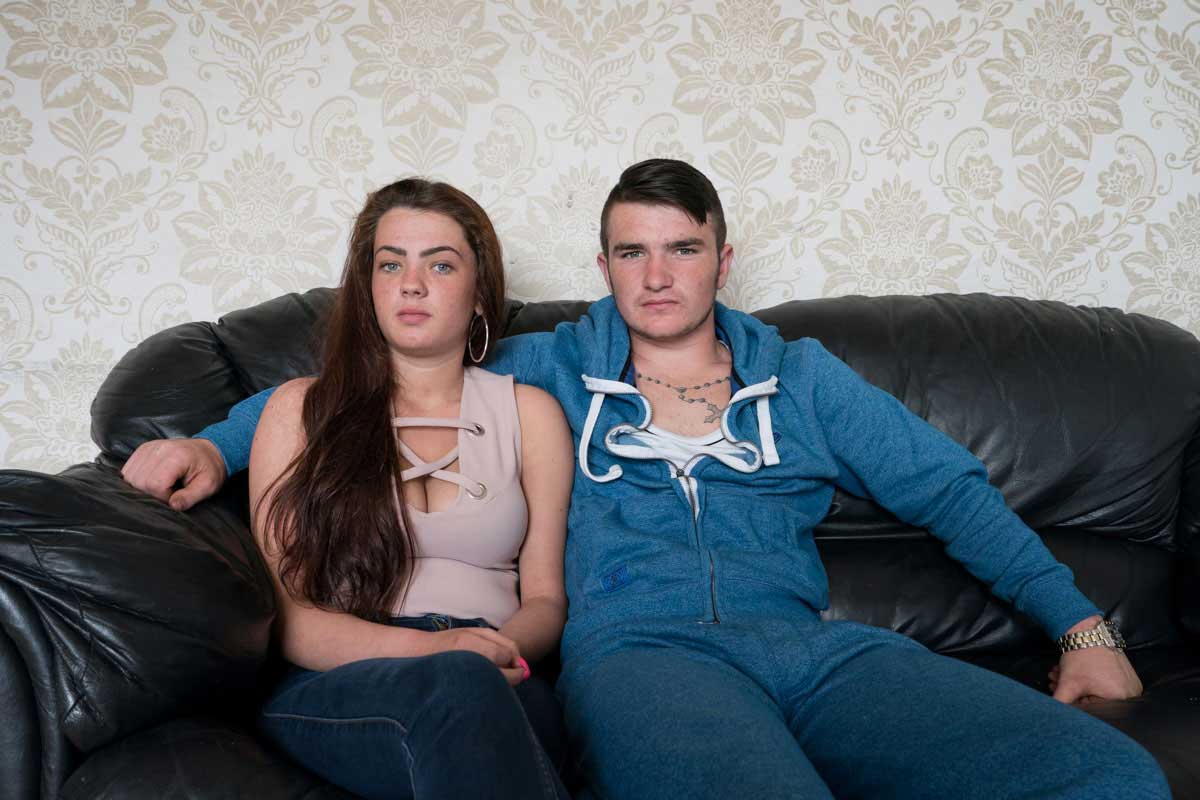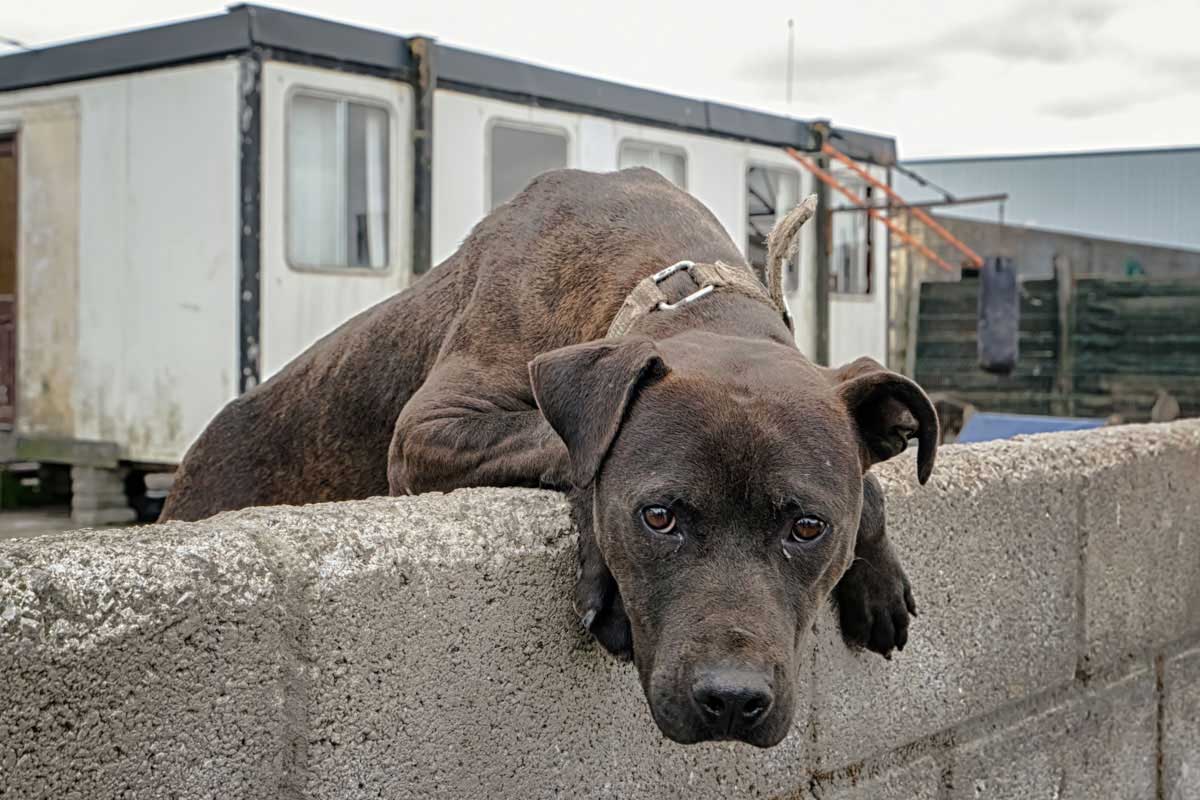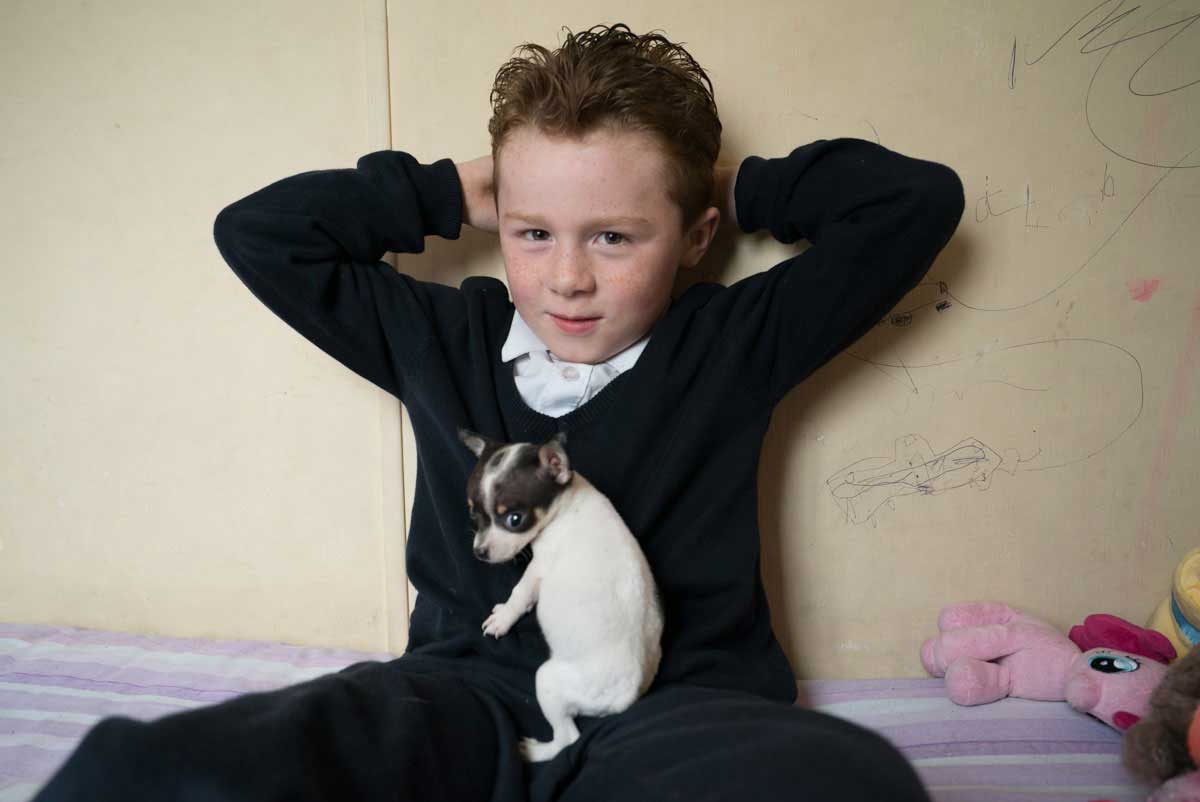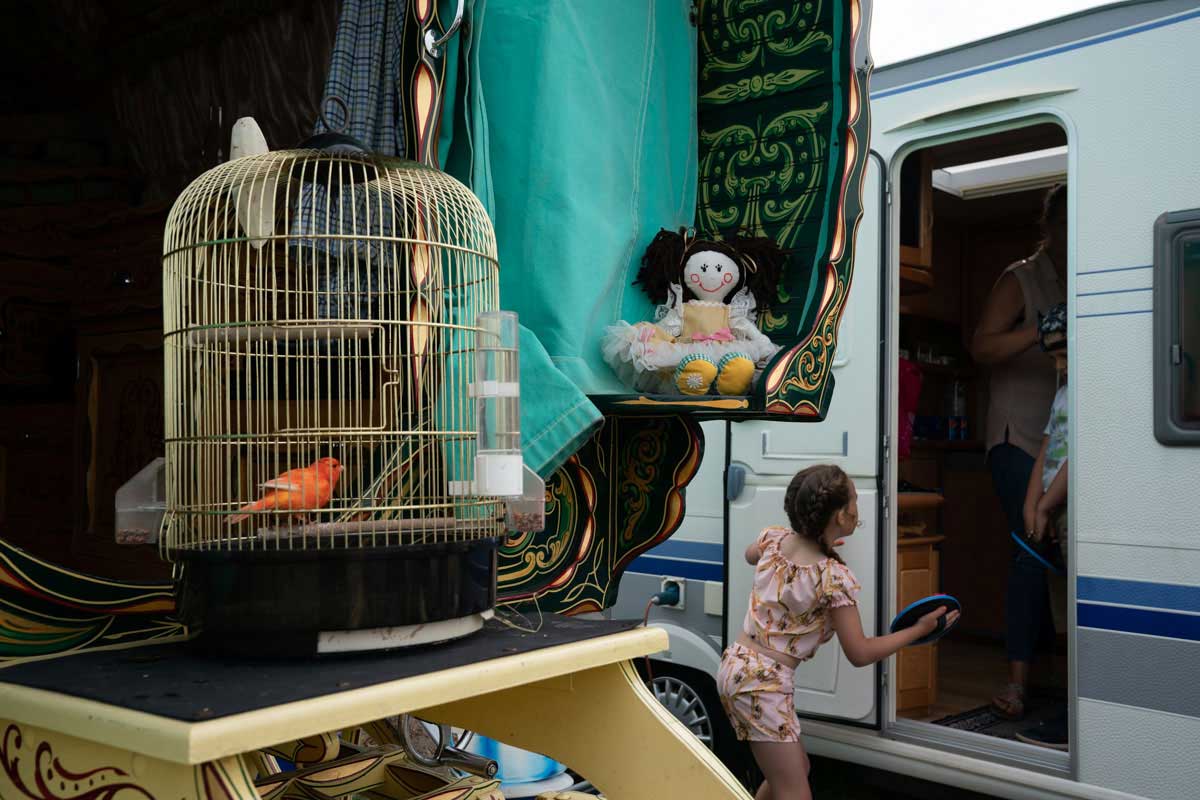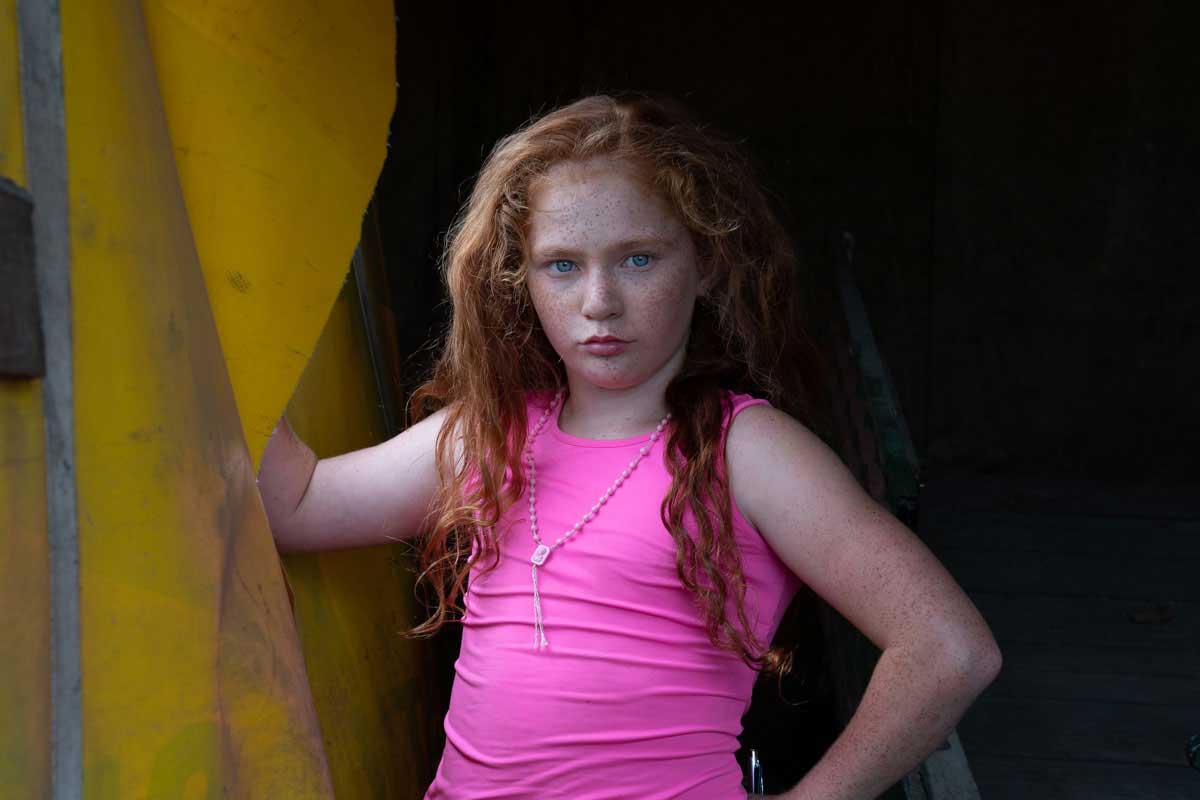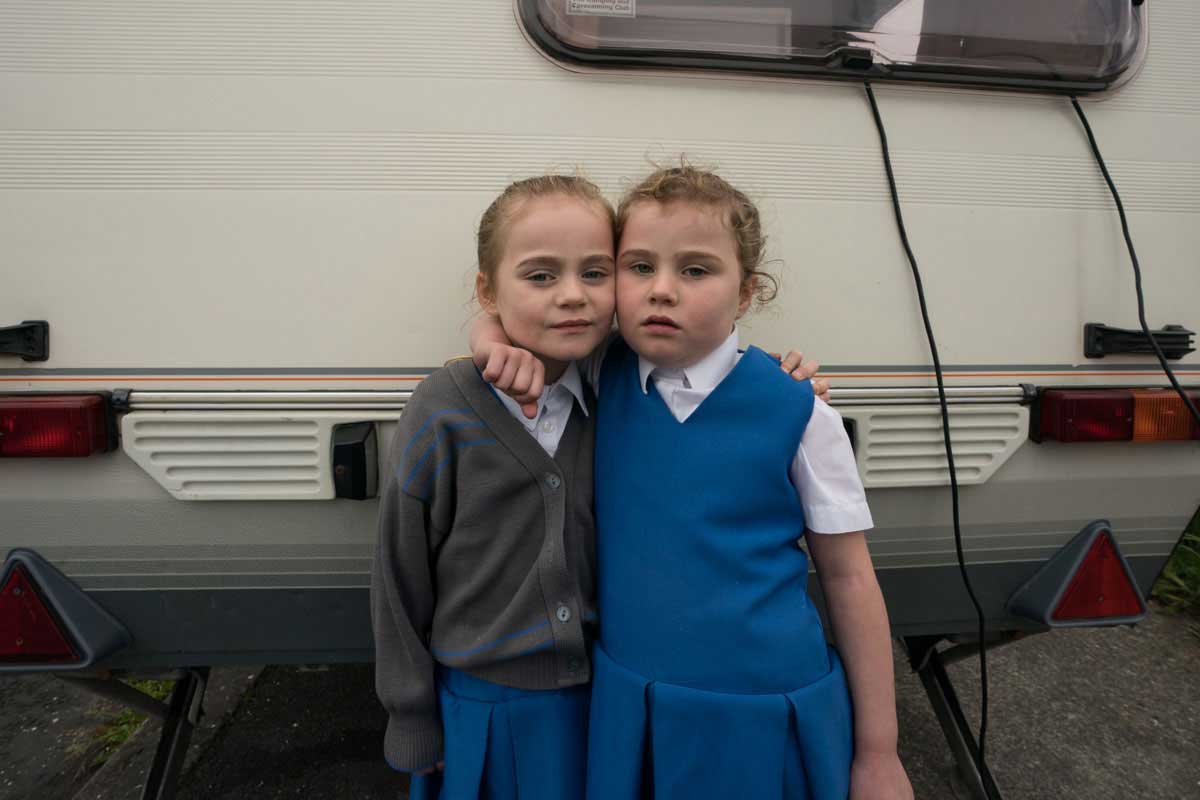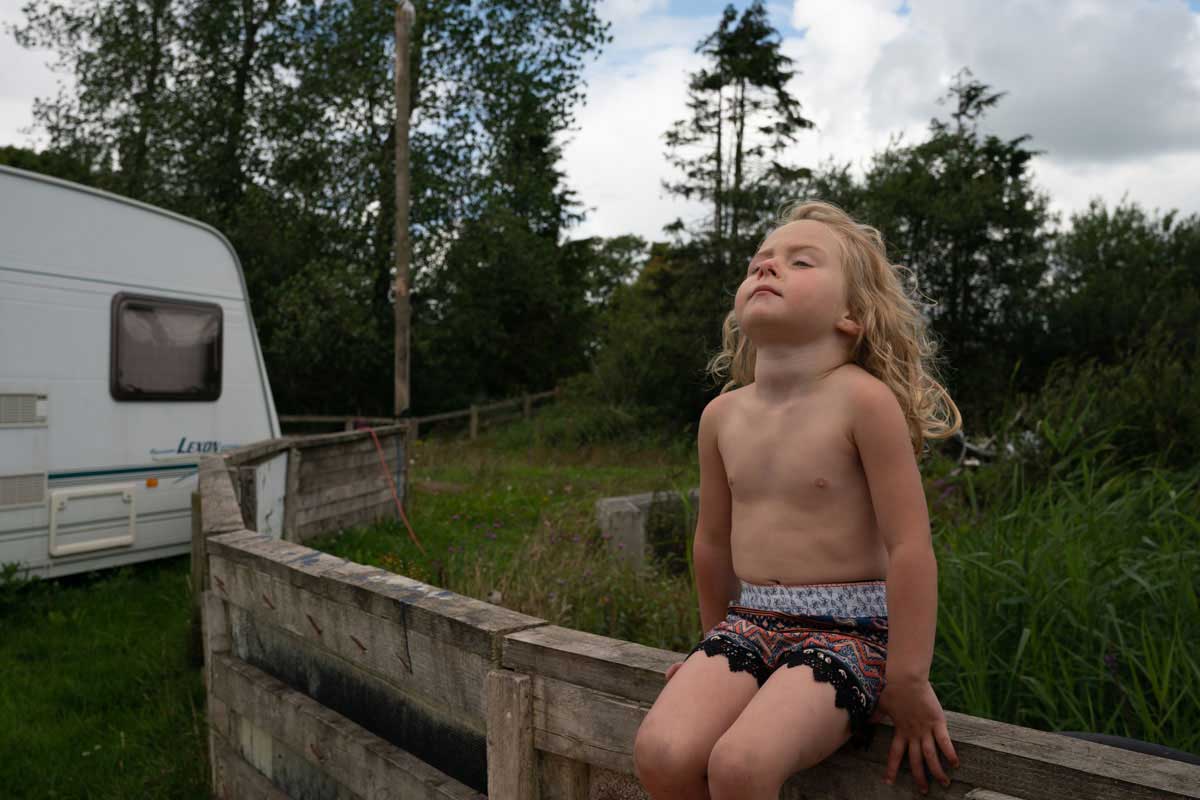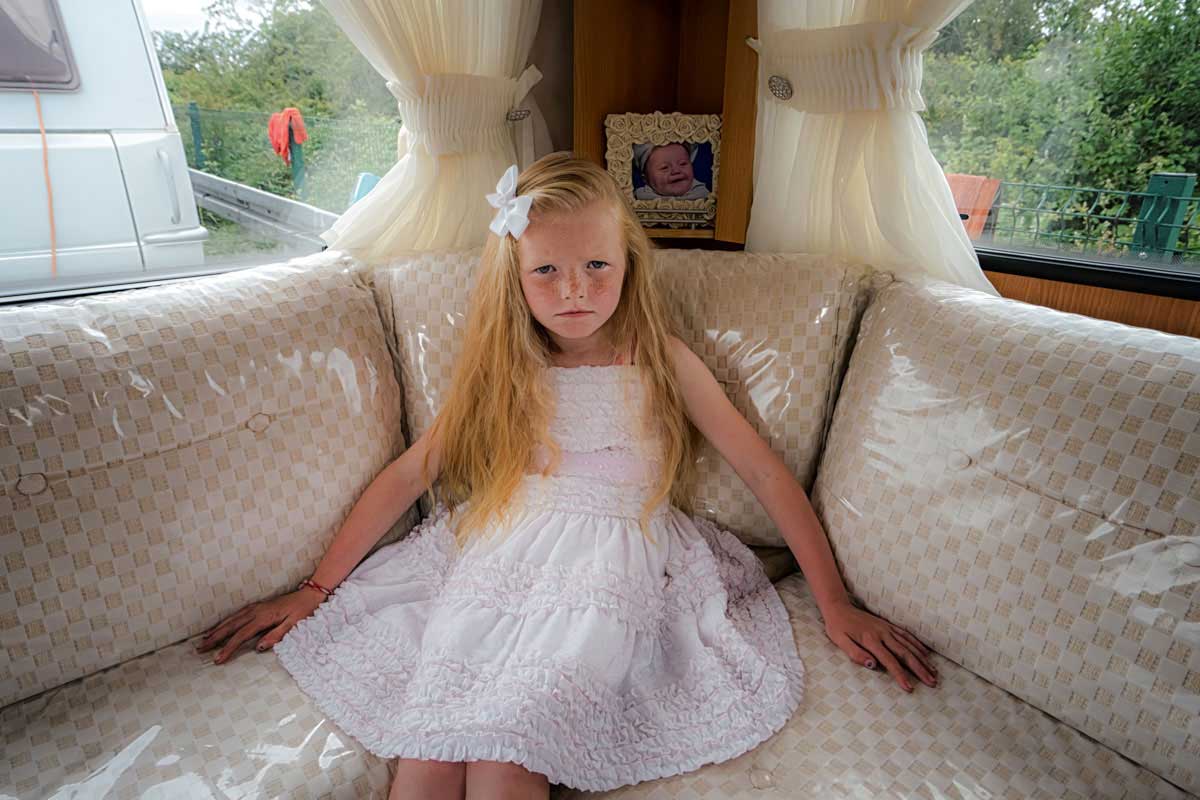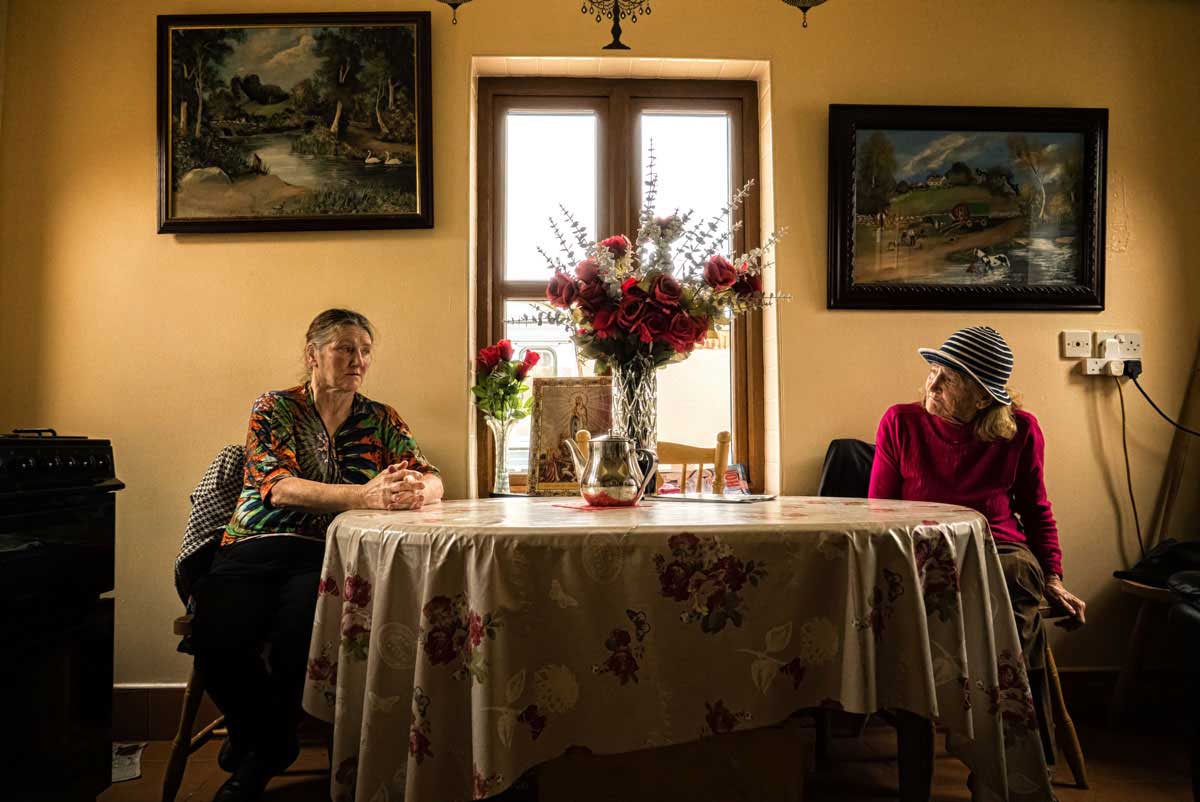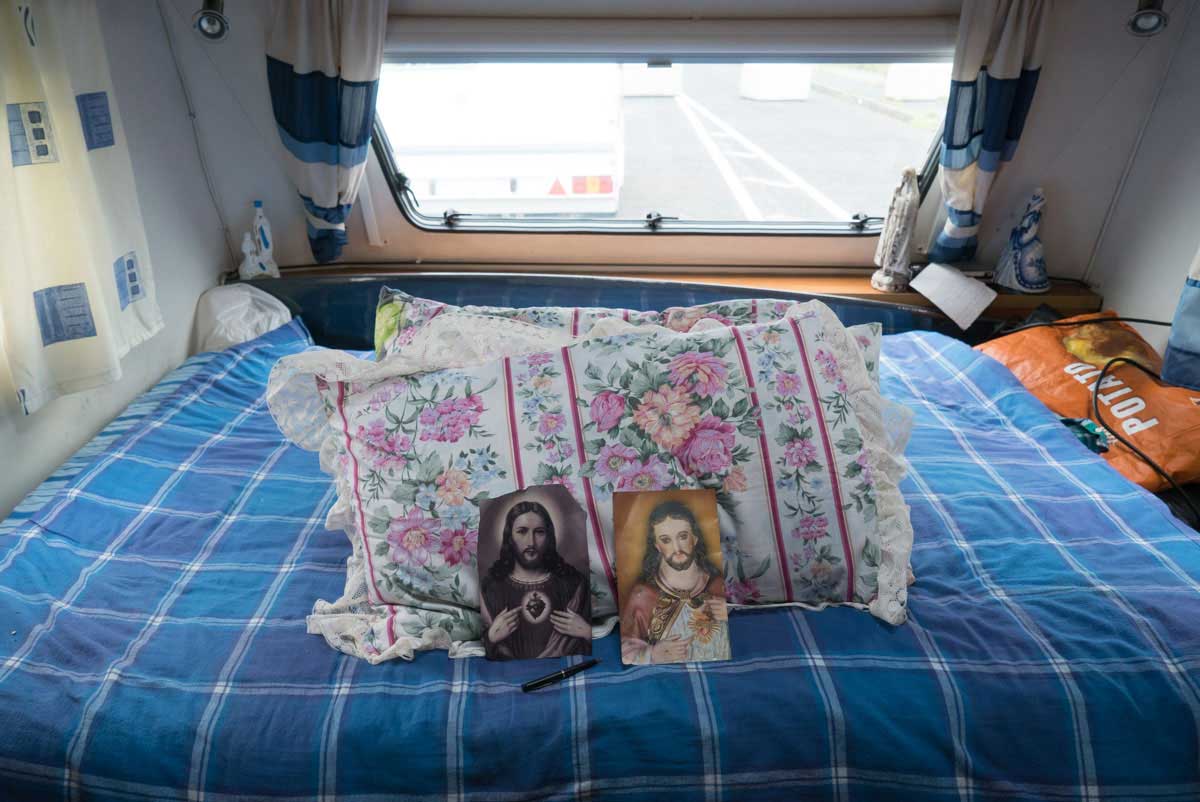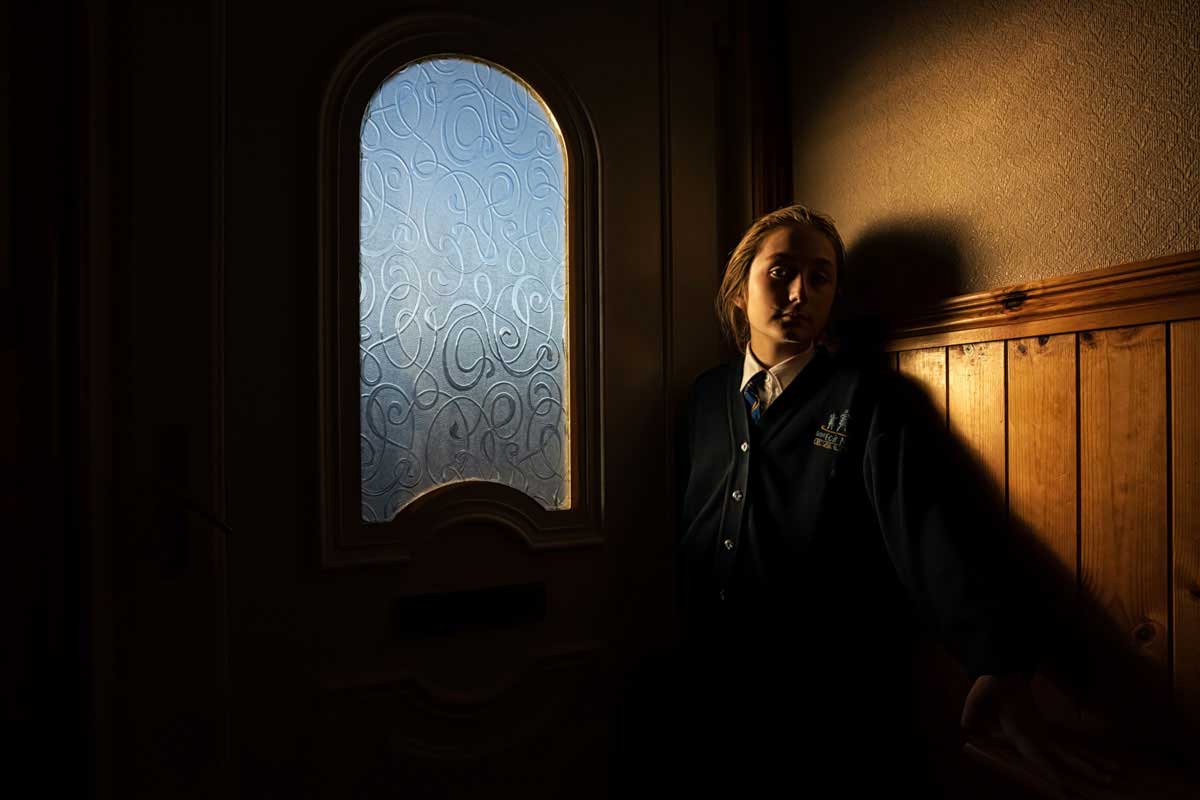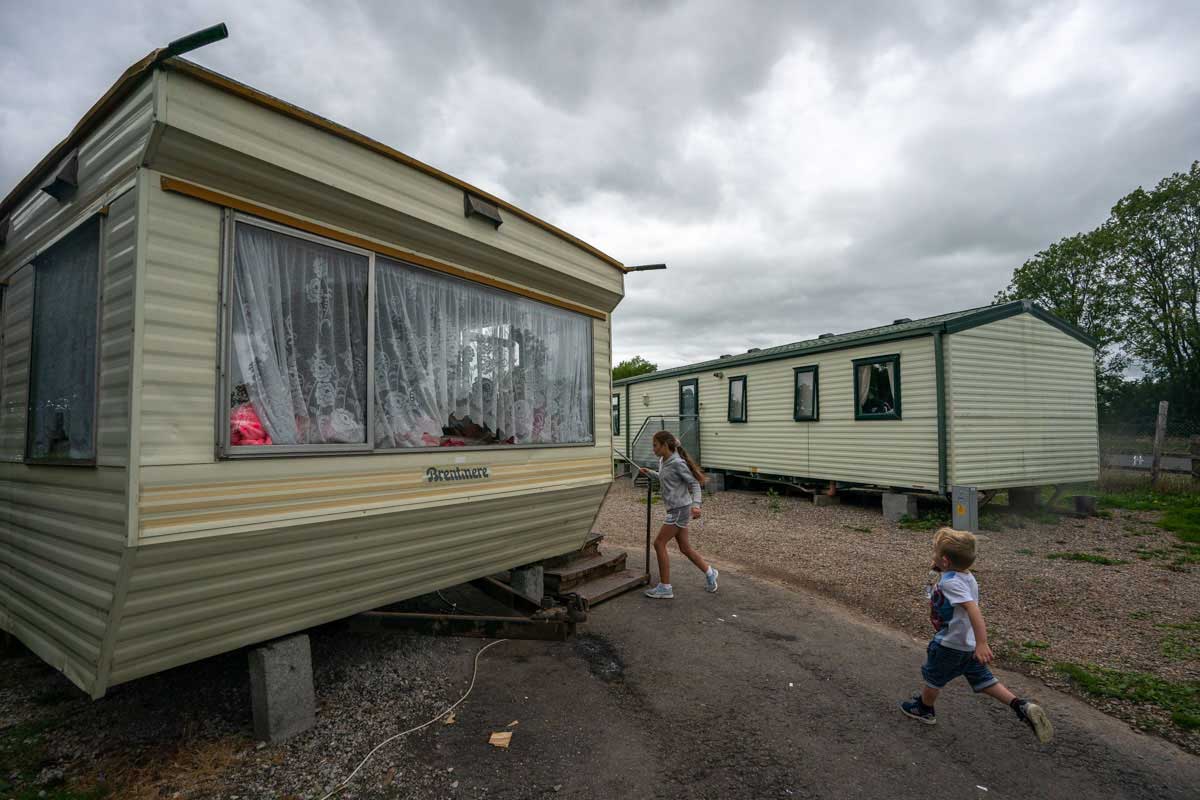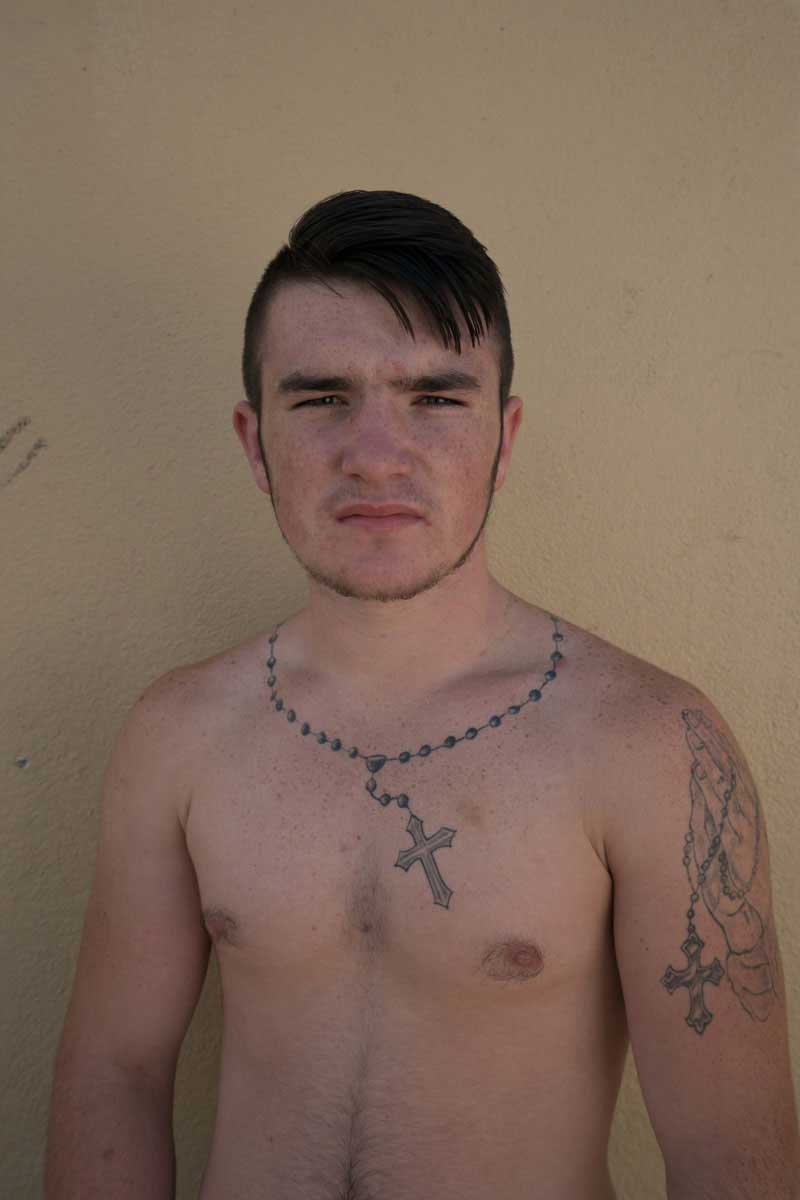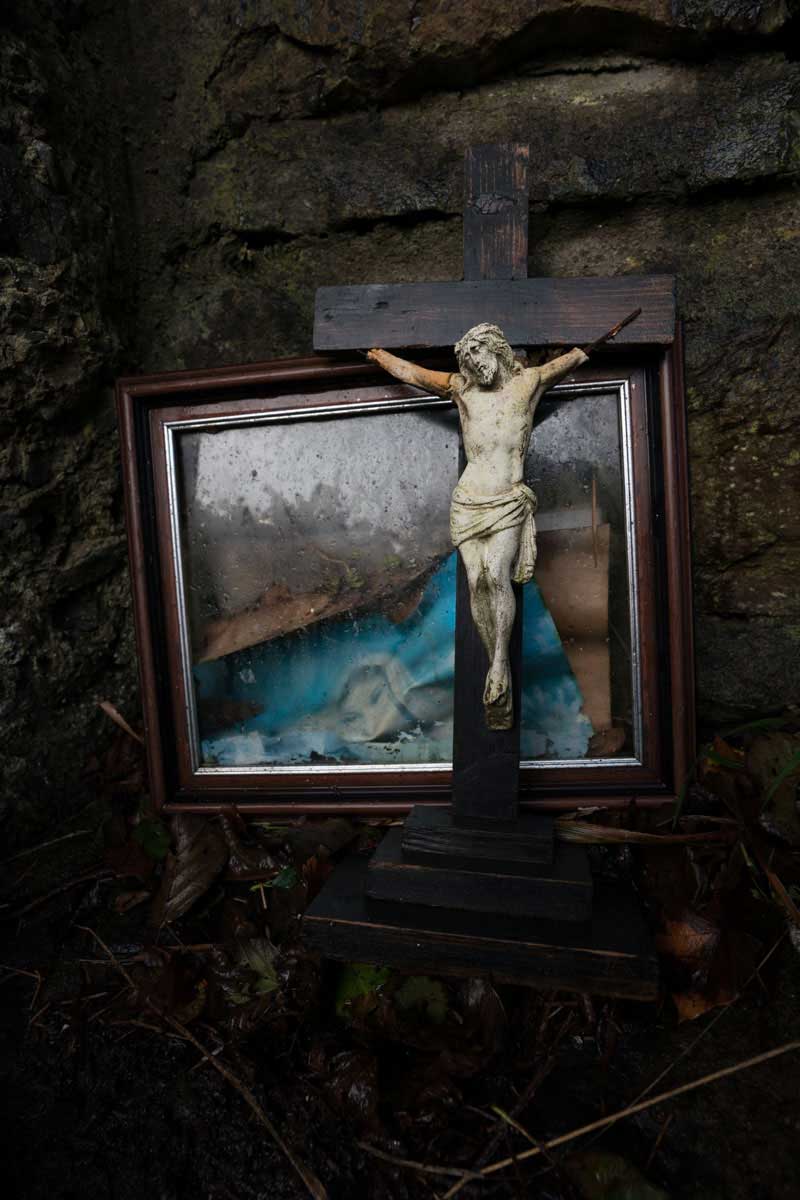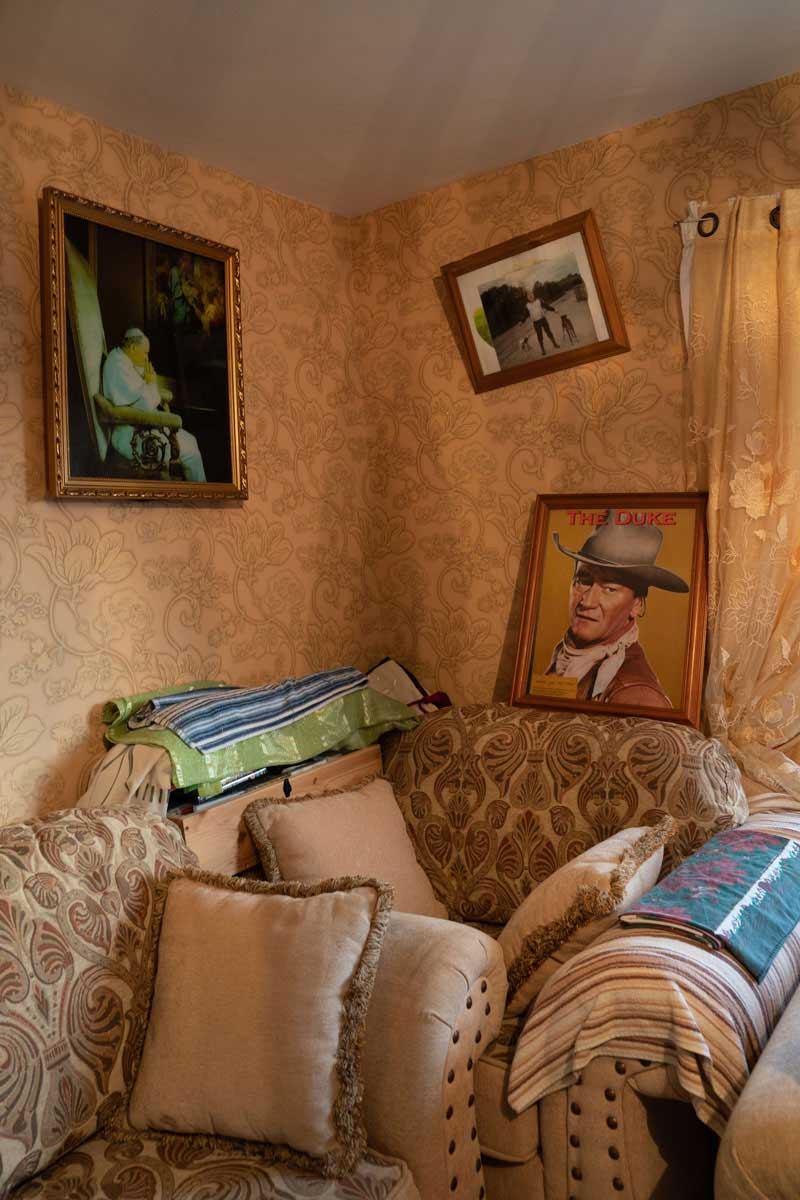Irish Travellers refer to themselves as Pavees or Minkiers, having lived on the margins of society for many hundreds of years. They number about 40,000 in the Republic of Ireland and Northern Ireland.
Of note, Travellers are separate ethnically from Romani, colloquially known as Gypsies. Historically, Travellers were nomadic, traveling in caravans, stopping for a couple of weeks to do odd jobs and moving on. They sometimes left rubbish in their wake which did not endear them to the Settled Irish. Since the 1960s, the Travellers have been encouraged or forced to stay in Halting Sites, which are fenced compounds provided by the local government on the periphery of cities or villages, though it does not suit their nomadic life style. When there is no more room in a halting site, they live in illegal encampments of 3-4 caravans pulled off the side of a road, frequently without water, sewer, or electrical services. Girls are coached to “pout” as toddlers, a practice at once provocative and innocent. The pouting and provocative dress continue well into the teen years, though they are not allowed to smoke, drink or have sex until marriage. Theirs is an endogamous culture and marriage is encouraged.
On average, they marry at age 16-17 and begin having children soon thereafter. Their predominantly Irish Roman Catholic families range from 4-16 in number, though there is a tendency for younger Travellers to have fewer children. They live as families, often in very small spaces. The women provide the primary family care. School is mandatory for the children, but they often drop out by the age of fifteen because of bullying, and/or family pressure to help out at home. Most are uneducated. Many are illiterate. Dogs, horse buying and selling at fairs and sulky racing are big activities of the men; the majority of whom are not regularly employed. Cultural differences are significant and distrust of non-Travellers is common. Like the Settled Irish, they receive assistance based on need from the Irish Government. Most are honest, but some are involved in theft and scams. Discrimination and racism directed toward the Travellers is prevalent. Pavees face additional challenges. Infant mortality is 3.5 times that in the general population.
They die 11-15 years sooner than Settled Irish. Tragically, the suicide rate is 5-7 times that of the general population. In one extended Limerick family, there have been 12 suicides, all under the age of 40. Drug and alcohol overdose accounted for 28% (14/50) of suicides in one study. 50-60% of Travellers have reported mental health issues. Unfortunately, their access to providers for mental health is limited. The Travellers have a unique culture and photographing them can be challenging. Some are reticent to interact due to the discrimination they frequently face. The key is to treat with them with respect, something they often do not receive from the Settled Irish. Though their resources are limited, once the ice is broken and some trust established, they will often pose willingly and may well invite you in for a cup of tea.
